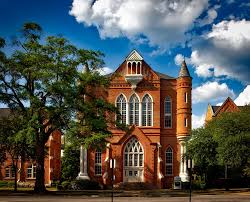The College Donor Digest
Lessons from the Return of $21.5MM Gift to Hugh Culverhouse
June 20, 2019 | Emily Koons Jae

A convoluted story about donor intent unraveled last week when the University of Alabama Board of Trustees voted to return a $21.5 million gift from Hugh Culverhouse, Jr.—the school’s most generous donor—and take his name off its law school. The trustee board’s vote followed a public statement from Mr. Culverhouse urging businesses and students to boycott the university and the state over Alabama’s new abortion law.
However, the university asserts that the decision had nothing to do with issue of abortion. Rather, it was “always about ending the continued outside interference by the donor in the operations of the University of Alabama School of Law.” Along with the statement, the university released a series of emails between Mr. Culverhouse and the school’s administration.
What happened? The information that we have is limited, but the emails and various documents released by the university reveal a few critical lessons for higher education donors.
1. It takes a village
In addition to its official statement, the University of Alabama released a “Reference Key.” This document details a list of characters involved in stewarding Mr. Culverhouse's gift which rivals that of a Tolstoy novel. In addition to the president, the emails also involve the chair of the trustee board, multiple attorneys, the chancellor, and the dean of students.
Higher education donors should keep in mind that many people will be involved in carrying out the intent of their gift. As important as a trusting relationship with university leadership can be, it is no substitute for a well-crafted gift agreement. By detailing their wishes in writing, donors ensure that all parties involved are singing from the same hymnal when it comes to the work that a gift has made possible.
2. Different schools operate differently
Mr. Culverhouse was by no means a new donor to higher education, nor a new donor to the University of Alabama. He had already given significant gifts to the women's golf program and to the business school.
His giving experience to the law school, however, proved much more contentious than his previous two gifts. As part of his $26.5 million pledge to the law school, Mr. Culverhouse endowed a chair, hoping to appoint a "renowned Constitutional law professor . . . someone to make academic waves." He was disappointed by the five candidates put forth by the law school and frustrated by the selection process.
Mr. Culverhouse explained his role in the selection of personnel with the business school in an email to Mark Brandon, Dean of the Law School, noting: "My input was a courtesy, but it was an acknowledgement of my involvement and commitment . . . I expect the same protocol at the law school."
Although the business school and law school are both under the University of Alabama, they do not operate under the same leadership, with the same approach to donor relations, or with the same procedures. "I have been feted and kept in the dark," wrote Mr. Culverhouse.
The maze of various procedures that donors must navigate underscores the importance of clarifying intent and a donor’s role in a well-crafted gift agreement. No donor should assume that past treatment implies protocol. Even within the same institution, procedures change as leadership changes.
3. Anticipate the best, but be prepared for every scenario
It is critical that donors think through ways their gift could fail to meet their intent, and then build in provisions from the start. Once a gift is set in motion, changing its terms becomes much more difficult.
Donors should think carefully about the timeline of their gift. Anything extending beyond a few years will need written clarification that explains what happens in the event of changes in leadership, university priorities, or institutional structure. Donors would also do well to think through which measurable outcomes to include in the university's reporting requirements.
It is unfortunate for Mr. Culverhouse, the University of Alabama, and Alabama's students that this generous gift took a sour turn. The Fund for Academic Renewal (FAR), acting as a third-party objective broker between the donor and institution, helps donors to avoid painful problems down the road. By understanding the unique workings of an institution and grappling with key issues up front, FAR helps to guide donors safely through the giving process.







